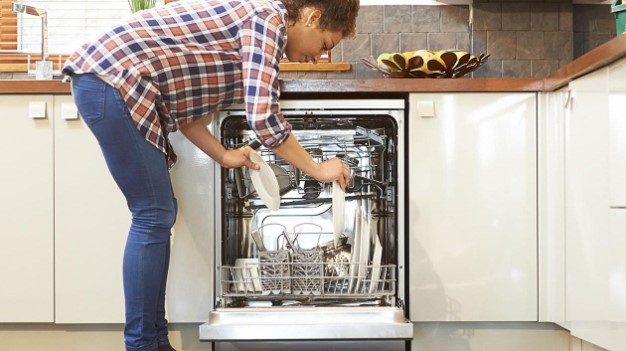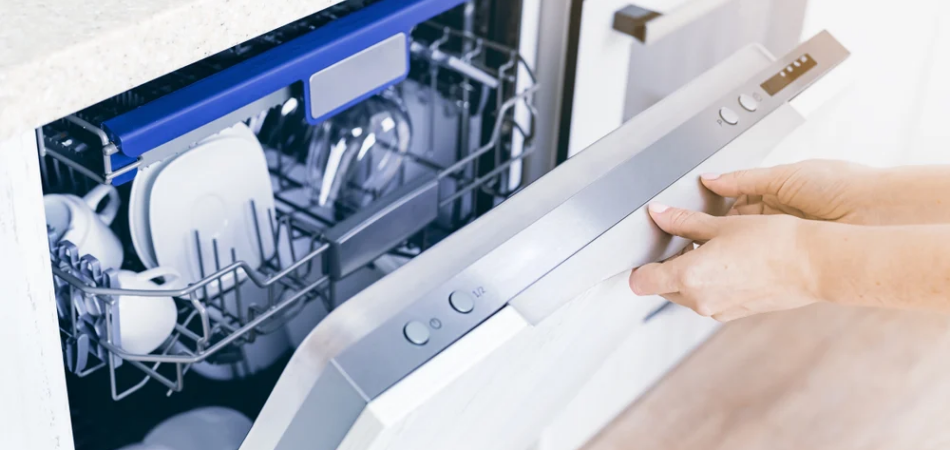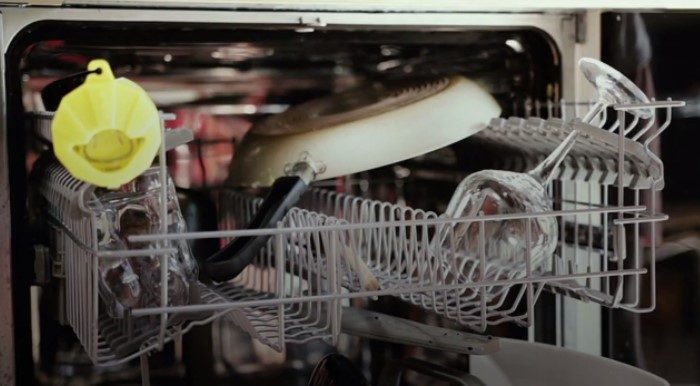When it comes to shopping for your kitchen appliances, you want to prioritize getting versatile equipment that can suit different conditions. The dishwasher is one kitchen appliance that comes in handy and is convenient for performing efficient dish cleaning.
However, you might ask, Is there a water pressure requirement for a dishwasher to work which can help you work with pressure fluctuations?
While the water pressure of a dishwasher isn’t so crucial, ensure that your water supply has a pressure of at least 20 psi and a maximum of 120 PSI.
Why is this so? Let’s discuss the importance of a dishwasher pressure system between those ranges. We’ve also outlined the steps on how you can increase your dishwasher’s water pressure.
Contents
- What is a Dishwasher?
- Is There A Water Pressure Requirement For A Dishwasher To Work?
- How Much Water Pressure Do You Need To Use A Dishwasher
- What Are The Reasons For Low Water Pressure?
- Is It Possible To Run A Dishwasher With Low Water Pressure?
- How To Increase Dishwasher Water Pressure?
- Frequently Asked Questions
- Conclusion:
What is a Dishwasher?
A dishwasher is a kitchen appliance used for cleaning (washing and drying) cookware, cutlery, and dishware autonomously. Unlike the traditional means of washing dishes, the dishwasher relies on electrical power to operate and sprays hot water on the wares while washing. It doesn’t require you to scrub the wares by exerting physical energy.
The machine uses a combination of water and powdered detergent pumped into a sprayer used to clean the dishes. After then, the dishwasher recirculates the mixture to conserve both water and electrical energy. Most times, it executes a pre-rinse that may or may not contain detergent before draining the water.
After the pre-rinse, the dishwasher drains the water then adds some extra hot water through an electromechanical solenoid valve. Then, the rinse process commences. When it completely rinses the dishes, it begins to dry them using one of the various available drying options. Also, usually, the dishwasher adds a rinse-aid, a cleaning chemical used to minimize the surface tension of water, to eradicate water spots that typically come from hard water.
Basically, a dishwasher performs a ton of activities autonomously. Let’s list them below:
- Adds water to the machine.
- Steams the water to the right temperature.
- Autonomously opens the detergent dispenser at required times.
- Sprays water via one or more spray arms to clean dishes and wares.
- Drains all dirty water.
- Dries dishes by heating the water, as specified by the user.
- Uses a time to monitor the length of each wash, rinse, or drain cycle.
- It contains a heat sensor to ensure that the dishes aren’t damaged by overheating.
- Also contains a sensor to detect if the water level is too high and turns off the water source.
- Lastly, some dishwashers contain sensors that can detect the level of dirtiness of the water used in washing the dishes. When the water becomes adequately clear, the dishwasher can now stop the washing process.
Is There A Water Pressure Requirement For A Dishwasher To Work?
There is a water pressure requirement for your dishwasher to operate properly. Notably, one major thing to consider is that the water pressure coming into your dishwasher is adequate to fill it correctly. Fundamentally, if the water pressure is much lower than the standard, the dishwasher will not fill up completely.
Also, if the water pressure is too much, your dishwasher can encounter some internal damages over time.
Also, while most dishwashers don’t work effectively, there is a special category of low water dishwashers. They can operate with a lower water pressure without having any difficulties. Consider getting one if your area doesn’t have higher pressure in the waterline.
How Much Water Pressure Do You Need To Use A Dishwasher
Dishwashers usually have a standard water pressure range from 20psi to 120psi, as stated by GE appliances. Any water pressure below 20 psi can damage the water supply valve, thus preventing it from shutting off. But rather than concentrating on the water pressure, we recommend that you concentrate on whether or not your dishwasher is filling up.
As we’ve stated, while you can use your dishwasher with low water pressure, it’s not advisable, as that can destroy your dishwasher water inlet valve. That said, you must find the right water pressure for your dishwasher. More essentially, any pressure that can fill your dishwasher to its top capacity is ideal and good enough. To determine the right water pressure for your dishwasher, commence a wash cycle. After the washing, open the dishwasher’s door. If the water reaches up to the heating coil, that is good enough.
What Are The Reasons For Low Water Pressure?
- The water inlet; The inside of the dishwasher is possibly not clean. To solve this, you can use a multimeter test to check it. Notwithstanding if it’s an old dishwasher or a recent one.
- Restricted water supply from the hose; You need to check for any restricted water hose beneath the sink. Also, ensure that there’s no other cause of low water problems.
- One other thing you can do is to confirm if the water level is sufficient manually. Power on your dishwasher and set it to perform a wash cycle. Let the dishwasher fill with water, then when it commences the wash cycle, check its water level. You can see the water level under the heating components. If the water level isn’t below the component, then you’d need to fill a bowl with water then fill the dishwasher water level by yourself until it gets below the heating component. Then, close the dishwasher door and allow it to work; if the water level gets to the top rack, then your machine has enough water.
- Another reason why your dishwasher may experience low water pressure is the presence of clog in the water line fill. This part of the dishwasher provides water into the dishwasher. So, remove the water line fill and scrutinize it for anything clogging the inlet valve’s screen. Additionally, check the water line to see if there is any blockage on it.
- Also, the connection may be faulty. Simply stated, the hose connecting to your dishwasher may cause leaking by allowing water to drain right out of it. So, check your dishwasher’s drain hose if it’s placed properly or if it has a loop on it.
- Lastly, while installing your dishwasher, you may have turned off the “Shut-off valve” beneath your sink. By turning off the shut-off valve, your water inflow may be restrained due to blockages. So, turn open the “shut-off valve” and ensure it’s not clogged.
Is It Possible To Run A Dishwasher With Low Water Pressure?
You can run your dishwasher with low water pressure. However, this will not be effective, and it won’t work very efficiently. Also, note that the low water pressure has a negative toll on the effectiveness of the dishwasher. Consequently, your dishwasher won’t clean your dishes effectively, and your wares will remain dirty.
Another thing that happens when using your dishwasher with low water pressure requires more time for the dishwasher’s drum to fill. One major reason why using a dishwasher with low water is a problem for the machine is that most of these dishwashers comprise an internal timer that fills up the drum within a certain amount of time.
Howbeit, as the dishwasher has low water pressure, this then leads to having insufficient water filling the dishwasher. Also, without sufficient water in the dishwasher, it can’t clean dishes effectively.
How To Increase Dishwasher Water Pressure?
Noting that having a low water pressure in your dishwasher can cause negative effects for the machine and your dishes, let’s consider how to increase its water pressure.
1. Power off the Dishwasher and Unplug it
The first thing you need to do is to turn off the water supply flowing into your dishwasher and remove it. So, locate the water control beneath the sink and turn it off by turning the spigot handle to the left end. When you’ve finished doing that, pull out your dishwasher and remove the power cord.
2. Take off the Access Panel
The next step is to locate the dishwasher’s water heater near the pump and pipes. Locate the pressure switch in a round pipe connected to the heater tube. Remove its cover.
3. Screw the Adjustment Screw in a Counterclockwise Direction
Then, to increase the dishwasher’s water pressure, using a flat-mouthed screwdriver, rotate the screw anti-clockwise. When you’ve finished doing that, you can reassemble your machine.
Frequently Asked Questions
How much water should fill the dishwasher?
While the standard amount differs by size and model type, there are two generally accepted. First, plastic drum dishwashers use water measuring up to 3/8 of 1 inch to 1 inch above its hub. Whereas porcelain and metal drum models require 1/2 inch beneath its heating element.
Does a dishwasher drain hose need a loop?
Should the dishwasher not require an air gap, then the loop for the drainage hose must be high above the floor. This protects the dishwasher from water back-flow. Also, it prevents spills when a cycle is ongoing.
How do I know if my dishwasher float is bad?
You can find out by checking if there is any obstruction from objects, preventing overfill floats from moving about freely. For example, if the fill is static in the top-most part, then the inlet valve won’t allow water into the tub.
Can high water pressure affect the dishwasher?
Yes. High water pressure can be much harder to restrain. This can cause a leakage in the plumbing, seals erosion, and the fixtures’ destruction.
Conclusion:
Getting everything right with your dishwasher where you have fluctuating water pressure can be tricky. That’s where you’ll end up asking whether is there a water pressure requirement for a dishwasher to work or not.
As stated earlier, the required water pressure for dishwashers is 20-120 psi. Anything below that can cause inefficient washing and damage your water inlet valve. On the flip side, anything above that range can lead to damages, wear and tear, and further problems. You’ve also seen that it’s possible to adjust the water pressure on your dishwasher.





